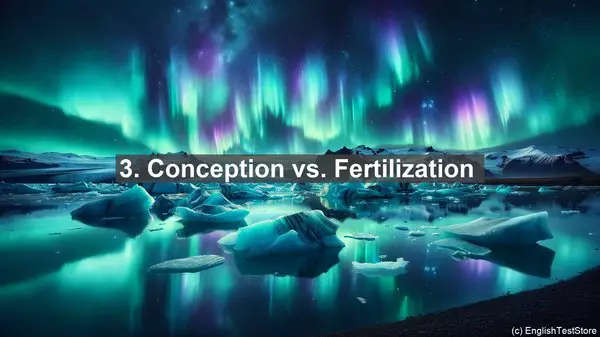Introduction
Welcome to today’s lesson on reproductive medicine. In this lesson, we’ll be focusing on a topic that often trips up even the most experienced students: commonly confused words. Understanding the nuances between similar terms is crucial in this field, as it can impact patient care and research. So, let’s dive in!
1. Gamete vs. Zygote
The first pair of words that often causes confusion is ‘gamete’ and ‘zygote.’ A gamete refers to a reproductive cell, such as sperm or egg, which contains half the genetic material. On the other hand, a zygote is the resulting cell after fertilization, which contains the full set of chromosomes. While gametes are haploid, zygotes are diploid. Remember, gametes are the ‘ingredients’ for fertilization, while zygotes are the ‘product.’

2. Infertility vs. Sterility
Infertility and sterility are terms used to describe a couple’s inability to conceive. However, they have distinct meanings. Infertility refers to the inability to achieve a successful pregnancy after a year of regular, unprotected intercourse. It can be due to various factors, such as hormonal imbalances or structural issues. Sterility, on the other hand, implies a complete inability to conceive naturally. It often indicates a permanent condition, such as the absence of reproductive organs. While both terms indicate difficulties in conceiving, the implications and potential treatments differ.
3. Conception vs. Fertilization
Conception and fertilization are often used interchangeably, but they have different timelines. Conception refers to the moment when a sperm and egg unite, forming a zygote. Fertilization, on the other hand, specifically denotes the fusion of the genetic material within the gametes. It’s important to note that while conception is a one-time event, fertilization can take a few hours to complete after intercourse.
4. Embryo vs. Fetus
During pregnancy, the developing entity goes through different stages. The term ’embryo’ is used from fertilization until around the 8th week, after which it’s referred to as a ‘fetus.’ The transition from embryo to fetus marks the beginning of organ formation and the rapid growth phase. Understanding these terms is crucial in monitoring the progression of a pregnancy and identifying any potential issues.
5. Gestation vs. Duration of Pregnancy
Gestation and duration of pregnancy are related but not the same. Gestation refers to the time from fertilization to birth, which is around 38-42 weeks in humans. On the other hand, the duration of pregnancy is often calculated from the first day of the last menstrual period. This difference is important in medical settings, as it helps in determining the age of the fetus and scheduling various tests and interventions.
6. Preterm vs. Premature
The terms ‘preterm’ and ‘premature’ are often used interchangeably, but they have distinct meanings. ‘Preterm’ refers to a baby born before completing 37 weeks of gestation. It’s a medical term used to categorize the timing of birth. ‘Premature,’ on the other hand, implies a baby born before reaching the stage of development where they can survive outside the womb without significant medical interventions. While all premature babies are preterm, not all preterm babies are necessarily premature.
7. Contraception vs. Conception
Contraception and conception are opposite concepts. Contraception refers to the deliberate use of methods or devices to prevent pregnancy. On the other hand, conception is the desired outcome, where a pregnancy is successfully achieved. It’s important to differentiate between these terms, especially when discussing family planning or reproductive health options.
8. Ectopic vs. Tubal Pregnancy
Ectopic and tubal pregnancy are often used interchangeably, but there’s a subtle difference. An ectopic pregnancy refers to any pregnancy that implants outside the uterus, which can include locations like the fallopian tubes, ovaries, or even the abdomen. A tubal pregnancy, on the other hand, specifically denotes a pregnancy that occurs within the fallopian tube. While most ectopic pregnancies are tubal, it’s possible for them to occur in other locations as well.

9. Menopause vs. Perimenopause
Menopause and perimenopause are stages in a woman’s reproductive life, but they have different definitions. Menopause refers to the permanent cessation of menstrual periods, usually occurring around the age of 50. Perimenopause, on the other hand, is the transitional phase leading up to menopause. It’s characterized by irregular periods and hormonal fluctuations. Understanding these terms is crucial in managing reproductive health and addressing concerns related to fertility or hormonal changes.
10. Assisted Reproduction vs. In Vitro Fertilization (IVF)
Assisted reproduction is a broad term that encompasses various techniques used to achieve pregnancy when natural conception is challenging. In vitro fertilization, commonly known as IVF, is one specific assisted reproduction technique. It involves fertilizing an egg with sperm outside the body and then transferring the resulting embryo to the uterus. While IVF is a widely known and often used method, it’s important to remember that it’s just one of the many options available under the umbrella of assisted reproduction.
